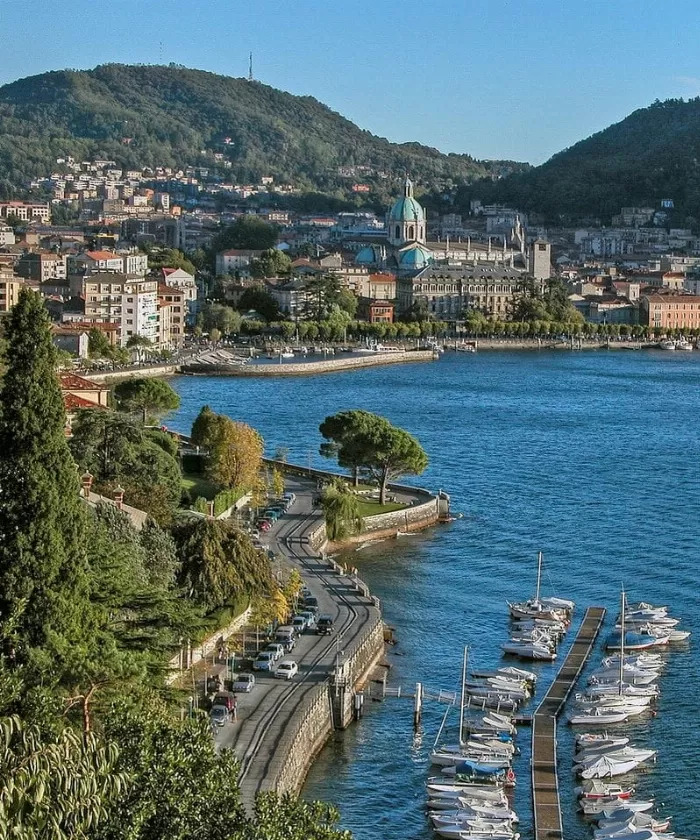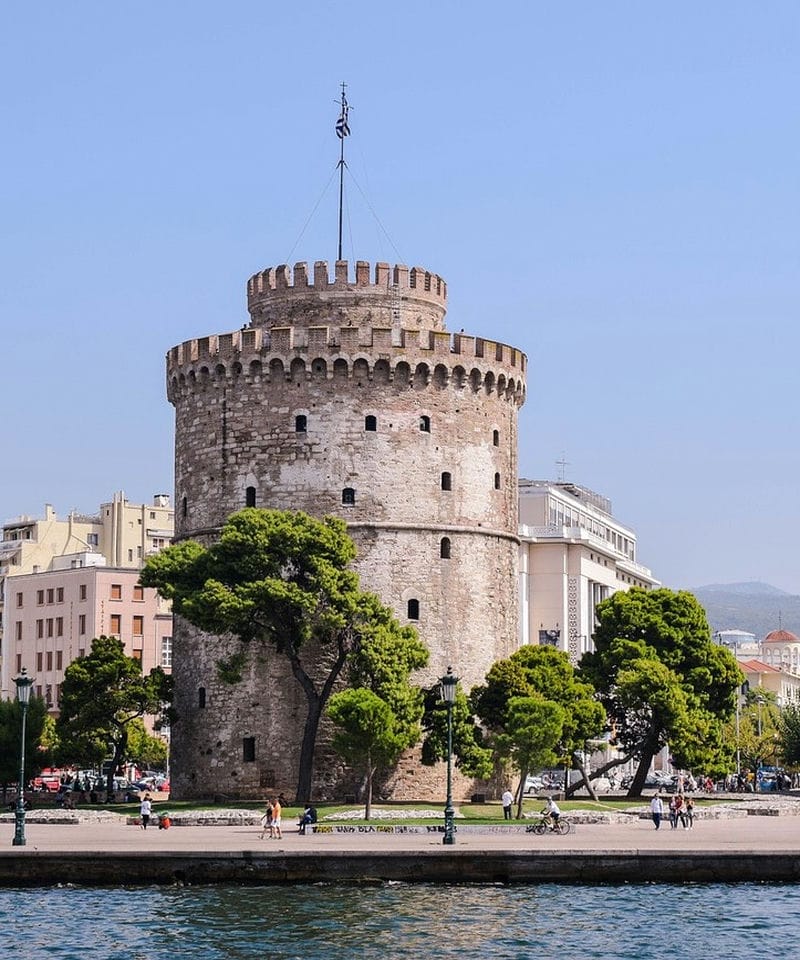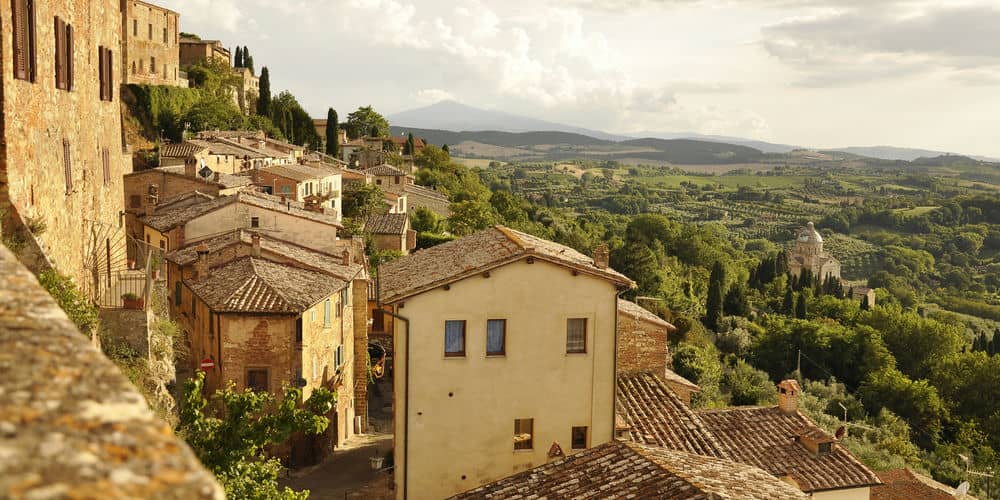
Famous Food in Italy: A Culinary Journey Through Iconic Dishes
Key Takeaways
- You can experience the famous food in Italy even when visiting Italy for the shortest time.
- Italian cuisine is an integral part of the country's culture, steeped in history and boasting a diversity of regional dishes.
- Fresh ingredients, traditional methods, and regional variance define the authenticity of Italian culinary practices.
- Italy's contributions to global cuisine include iconic dishes like pizza and fresh pasta covered in a variety of sauces, as well as a rich variety of cheeses, risotto, desserts, and beverages.
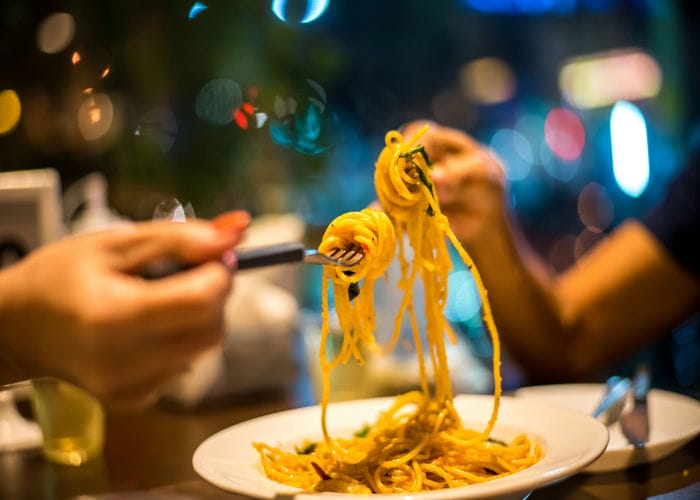
Pasta toast - credits: MR. AEKALAK CHIAMCHAROEN/Shutterstock.com
Italian cuisine has long been a beacon of culinary excellence, synonymous with a rich history and a relentless pursuit of quality.
The storied tapestry of the traditional Italian food scene has its roots deeply embedded in ancient Roman dishes and has evolved over centuries to become what the world knows and loves today.
Each Italian region brings its own unique flavor to the table, creating a diverse landscape of tastes and traditions that speak to every aspect of Italian culture.
The importance of fresh ingredients cannot be understated; they are the cornerstone that has helped Italian cuisine dishes stand the test of time and continue to captivate food enthusiasts internationally.
Among the many gifts Italy has offered to global gastronomy, pizza stands out as a cultural phenomenon, with its origins tracing back to Naples and capturing hearts worldwide.
Pasta, another pillar of the most famous Italian foods, exemplifies the versatility and creativity inherent in Italian cooking, often tailored locally with distinct regional variations.
Not to be overlooked, Italian cheese and risotto offer a world of flavors and textures, with cheese playing a critical role across countless recipes and risotto reflecting the essence of Northern Italy.
Italian desserts, from tiramisu to gelato, provide delightful endings to meals, while Italian beverages, which extend far beyond wine, add another dimension to the culinary experience.
The Historical Roots of Italian Cuisine

Italian cuisine, with its myriad of traditional dishes, is a reflection of the country's rich cultural heritage and the influence of various civilizations throughout history.
The following sections explore the evolution of Italian cooking and the profound impact ancient civilizations have had on this renowned culinary tradition.
The Evolution of Italian Cooking
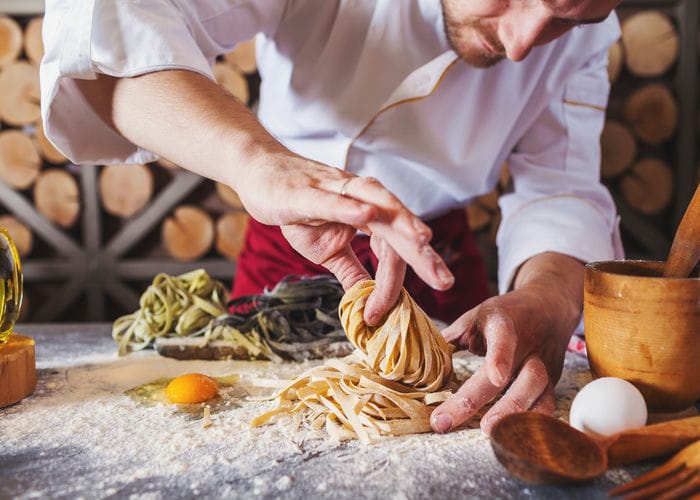
Italian cooking has developed over centuries, with each era contributing distinctive flavors and techniques.
Ancient Rome significantly shaped Italian culinary practices, as illustrated by the first-century BC Roman cookbook, Apicius.
This historical document offers insights into the foods in Italy valued by ancient Romans and the gastronomic experimentation that occurred at banquets, which played a central role in social and political life at the time.
Moving through time, the Italian Renaissance brought refinement to local cuisine, turning it into an art form.
The period saw Tuscany, home to Florence, rise with dishes that emphasized quality ingredients prepared in ways that exemplified the region's appreciation for simple yet satisfying flavors.
Dishes from this era still influence modern Italian cooking, where the balance of flavors and the quality of produce hold a place of honor on the table.
The 17th through 19th centuries saw a continued evolution, with regions such as Emilia-Romagna emerging as culinary leaders, contributing classic Italian dishes like Parmigiano Reggiano and balsamic vinegar.
Italy's eventual unification in the 19th century created a platform for the diverse regional cuisines to merge into the singular yet still varied Italian culinary identity known around the world today.
Influence of Ancient Civilizations on Italian Food
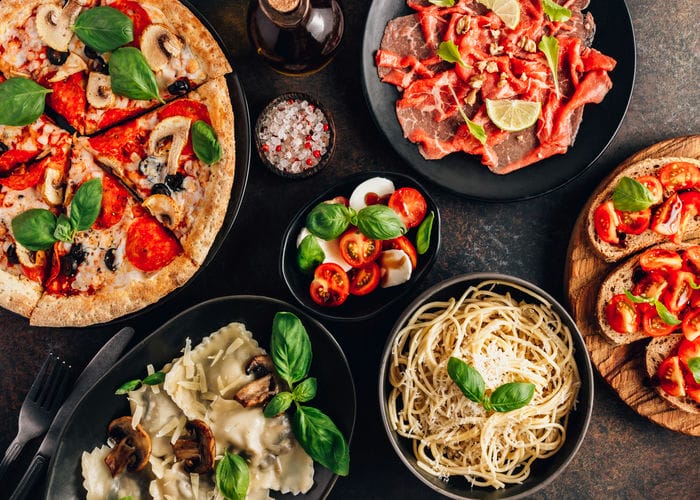
Beyond the Roman Empire, Italian cuisine was enriched by various civilizations that traversed Italy's lands.
Notably, the Middle Ages marked an era of openness and integration, where the Moors influenced Sicilian cuisine through the introduction of ingredients like dried fruit and spices, leaving a legacy that includes pasta—a cornerstone of Italian cuisine.
The geographical aspects of Italy played a pivotal role in shaping its food culture: the extensive coastlines offered abundant seafood, the fertile plains and valleys provided grains and vegetables, and the mountainous regions brought forth cheeses and cured meats.
These diverse resources allowed for a culinary heritage deeply connected to the land and sea.
Each region of Italy imparts its unique contribution to the overarching framework of Italian cuisine.
From the rich dairy-influenced dishes of Northern Italy to the vibrant tomato and olive oil-based recipes of the South, Italian food is a testament to the historical confluence of indigenous ingredients and foreign influences.
Explore the full diversity of Italian gastronomy in detail at 'Food in Italy: A Culinary Journey Through Regions and Traditions', where the history and idiosyncratic regional characteristics are highlighted, further illustrating the lasting impact of ancient civilizations on the celebrated traditions of Italian food.
The Role of Fresh Ingredients
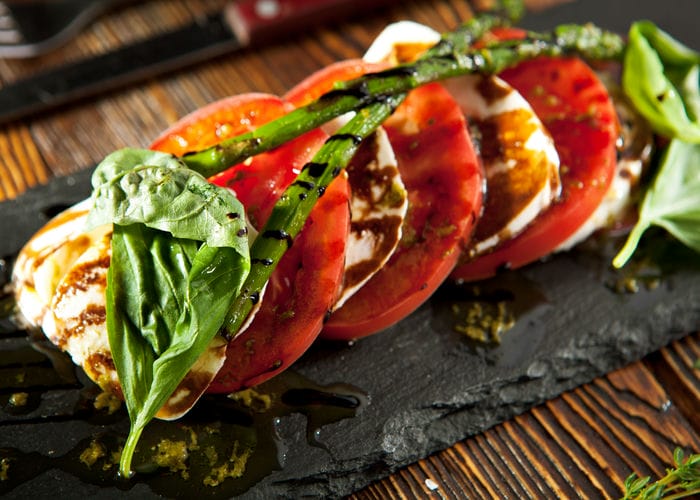
In Italian cuisine, the quality of the ingredients is paramount.
Each dish reflects a deep respect for the natural flavors of fresh, locally-sourced produce, and the use of seasonal ingredients is a cherished culinary principle.
The Emphasis on Quality and Locally Sourced Produce
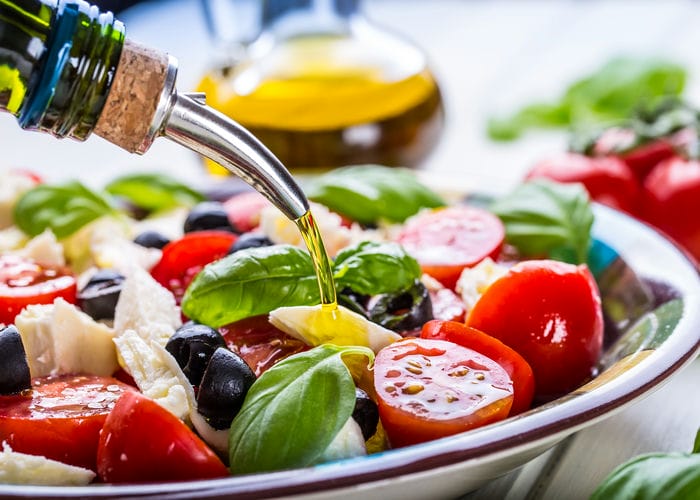
Olive oil on salad - credits: Marian Weyo/Shutterstock.com
Italian cooking places a strong emphasis on the quality of ingredients used in its dishes. Locally sourced produce is not just a preference but a cornerstone of the culinary tradition.
Each region takes pride in using local ingredients such as olive oil, vegetables, cheese, and meats to create dishes that are both unique and reflective of the area's culture.
For instance, olive oil is a staple in Italian kitchens, cherished for its versatility and rich flavor that enhances dishes without overwhelming them.
- Olive Oil: A staple of Italian cuisine used in dressings, for sautéing, and as a finishing oil.
- Garlic & Herbs: Fundamental for creating depth and aroma in dishes, with basil taking a special place in recipes like pesto Genovese.
- Cheese: Varieties like Parmigiano-Reggiano are aged and deployed in numerous dishes for sharp, complex flavors.
- Meat & Pork: High-quality cuts are essential, with regions like Emilia-Romagna famous for cured pork products.
The passion for pork, ranging from prosciutto to salami, is evident in the careful aging processes that turn simple ingredients into sublime experiences.
Cheese, another vital component, spans an array from the sharpness of Pecorino to the creaminess of Gorgonzola, showcasing Italy's regional diversity.
Seasonality in Italian Cooking
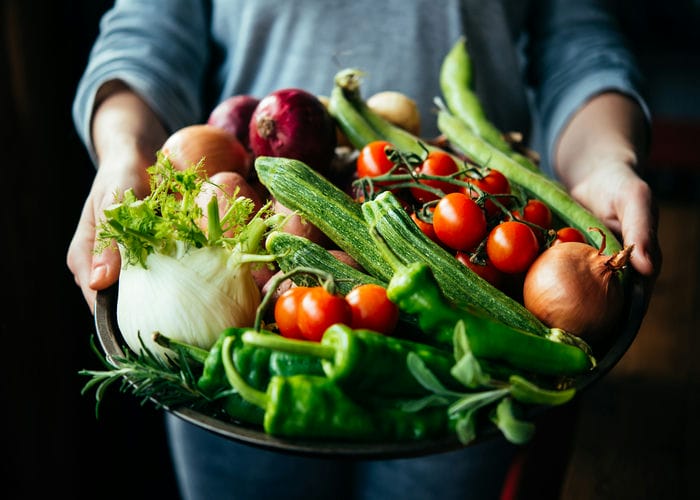
Seasonality plays an essential role in Italian kitchens, guiding not just the menu but also the rhythm of life.
Italians cook what is in season, maximizing flavor and nutrition.
For example, spring brings dishes adorned with delicate herbs and vegetables such as basil and ripe tomatoes, which are central to the cuisine during this time.
- Spring: Basil, garlic greens, and young cheeses.
- Summer: Ripe tomatoes, zucchini, and fresh salads.
- Autumn: Truffles, mushrooms, and the start of the olive harvest.
- Winter: Hearty stews utilizing root vegetables, preserved meats, and bold cheeses.
The cyclical nature of what is harvested dictates the dishes that appear on the table. To truly appreciate Italian food as intended, one visits Italy when these items are at their peak.
For travelers planning to experience the authentic flavors of Italy, it is recommended to research the best time to visit and the regions known for specific ingredients.
Details on which can be found in guides like 'How to Plan a Trip to Italy', which also offers tips on creating a diverse itinerary that encompasses Italy's rich culinary landscape.
Pizza: Italy's Culinary Gift to the World

Pizza is not just a dish; it's a reflection of Italian heritage and culinary artistry that can be found in almost any Italian restaurant you visit.
Tracing its roots back to Naples, this iconic food has evolved into countless variations across Italy, from the thin and crispy Roman style to the thicker and more robust Sicilian version.
Each pizza, with its simple yet flavorful ingredients, has become synonymous with Italian cuisine.
Origins of Pizza in Naples

The city of Naples is where the journey of pizza began, transforming it from humble street food to a global phenomenon.
The classic Pizza Margherita, born here, is a testimony to the traditional Italian toppings – ripe tomato sauce, creamy mozzarella, and aromatic basil, symbolizing the Italian flag with its red, white, and green colors.
The Margherita pizza not only continues to be a beloved choice in Italy but has also cemented its status across the globe.
To experience the heart of Italian pizza culture, Italy attractions suggest including Naples in one's itinerary.
It is in Naples where pizza shines as a testament to Italian culinary simplicity and excellence.
Variations Across Italy
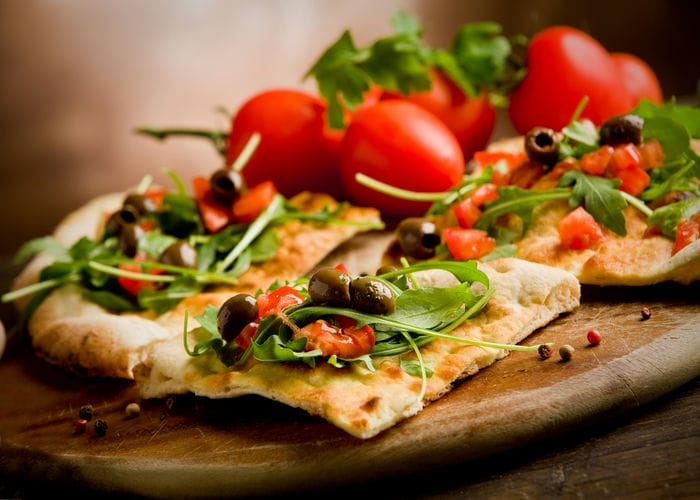
As travelers explore Italy, from the bustling streets of Rome to the serene canals of Venice, they discover that pizza takes on many delicious forms.
Venice offers its unique interpretation, while Milan, known for its creative flair, often adds a gourmet touch to classic pizza recipes.
- Rome is famed for "Pizza al taglio" — pizza by the slice — characterized by a thin, crisp base, indicative of Roman culinary elegance.
- Sicily boasts "Sfincione," a thick, spongy dough richly topped with tomato, onions, anchovies, and caciocavallo cheese.
- Milan, on the other hand, experiments with contemporary toppings while still honoring traditional Italian flavors.
Across Italy, ingredients like olive oil and mozzarella remain constant, defining the authenticity of the Italian pizza experience, making any pizza selection a safe yet indulgent choice for gourmets and casual diners alike.
Pasta: A Staple of Italian Cuisine
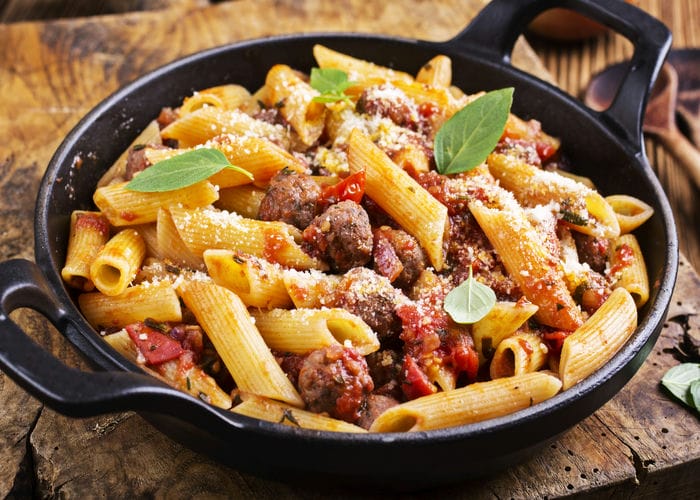
Pasta is an iconic element of Italian cuisine, with each region offering unique and traditional dishes that reflect local flavors and culinary history.
Different Pasta Dishes Across Regions
Northern Italy
Regions like Bologna are known for their rich sauces and stuffed pasta.
Ravioli and gnocchi often grace the tables here, with butter-based sauces and tender meats filling them.
Notable is the beloved ragù, a slow-cooked meat sauce that often accompanies tagliatelle or is used as the filling for lasagna.
Central Italy
Central Italy: The heart of Italy is the birthplace of some of the most renowned pasta dishes.
Spaghetti alla Carbonara, originating from this region, is a sumptuous dish made with eggs, hard cheese, cured pork, and black pepper.
Rome and its surroundings also favor simple yet flavorful ingredients, creating dishes where traditional recipes shine through every bite.
Southern Italy and the Islands
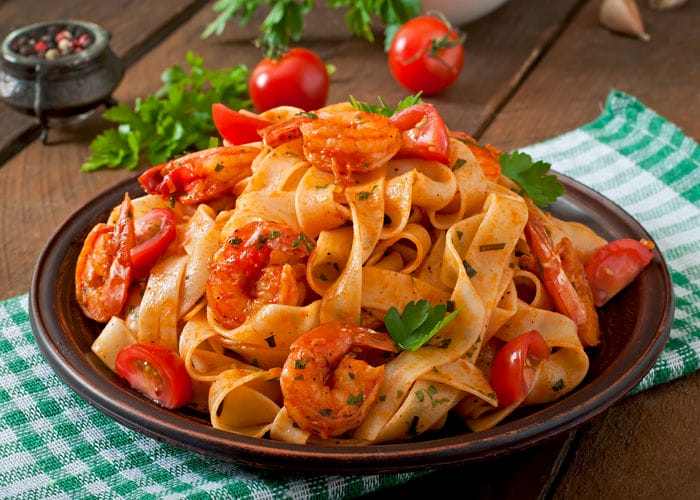
Moving down to the south, the use of olive oil, tomatoes, and fresh vegetables becomes more prominent.
Sicily and other coastal areas offer a variety of seafood pastas.
Additionally, Puglia is known for its orecchiette with broccoli rabe or turnip tops. Naples is famous for its spaghetti dishes commonly served with a robust tomato sauce.
Liguria: This coastal region is the home of pesto, a sauce traditionally made of basil, pine nuts, garlic, Parmesan cheese, and olive oil.
It's commonly tossed with trofie or trenette pasta, showcasing the simple yet vibrant flavors of Italy's northwest.
The diversity of Italian pasta dishes is a testament to the ingrained culinary tradition that varies significantly from region to region.
With ingredients like bread crumbs being used in the south for texture and dishes in the north often incorporating rich dairy products like butter and cheeses. Italian cuisine is one for the books.
Each dish tells the story of its origin, with generations of Italians preserving these time-honored recipes.
Italian Cheese: A World of Flavors
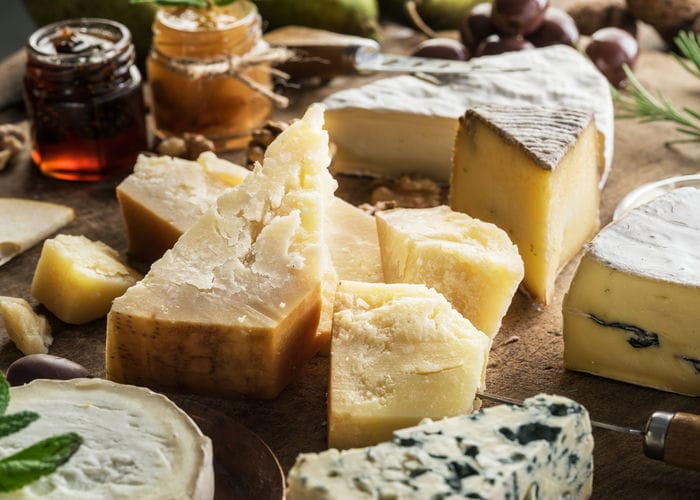
Italian cuisine is synonymous with its diverse and flavorful cheeses, which are integral to countless traditional dishes.
Each cheese adds a unique touch, enhancing flavors and creating a rich culinary experience.
The Variety of Italian Cheeses
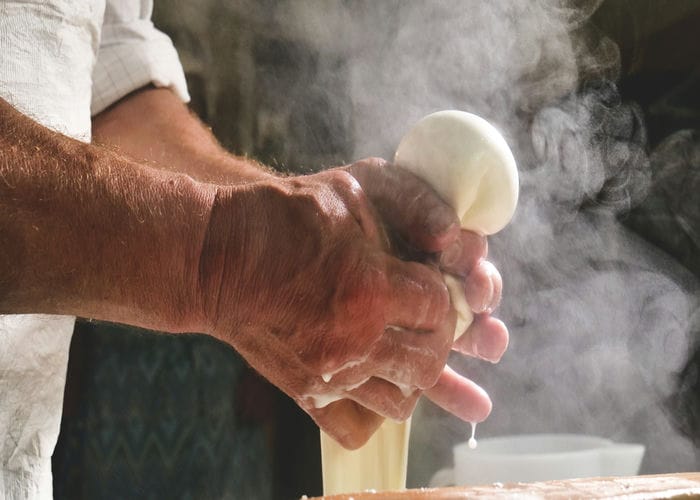
Italy's cheese selection is vast, with each variety boasting its own distinct flavor profile, texture, and history.
At the heart of this variety are mozzarella, parmigiano reggiano, pecorino, gorgonzola, and mascarpone, among others.
- Mozzarella: A staple in Italian cuisine, known for its mild flavor and stringy texture. Mozzarella cheese is traditionally made from water buffalo milk, contributing to its unique taste.
- Parmigiano Reggiano: Often called the "King of Cheeses," this hard, granular cheese is aged for at least 12 months and is essential in dishes like risotto and pasta.
- Pecorino Cheese: Made from sheep's milk, it ranges from soft and mild to hard and sharp, depending on the aging.
- Gorgonzola: This blue-veined cheese incorporates both a sharp tang and a creamy texture, adding a bold flavor to pizzas and pastas.
- Mascarpone: A soft cheese known for its creaminess, often used in desserts like tiramisu.
The Role of Cheese in Famous Italian Dishes

Italian cheeses play a pivotal role in elevating the flavors of various dishes. The application of these cheeses is as diverse as their flavors.
- Pasta and Risotto: Parmigiano Reggiano and pecorino are often grated over dishes like cacio e pepe, enhancing the creamy texture and peppery bite.
- Pizza: The stretchy quality of mozzarella makes it the perfect topping for pizza, melting beautifully to create a delicious layer of cheese.
- Arancini: These fried risotto balls are frequently stuffed with mozzarella, which melts during cooking, providing a gooey center.
- Gorgonzola: Added to sauces or as a topping, this cheese imparts a robust flavor to various recipes, from pasta to meat dishes.
Cheeses like mozzarella and mascarpone showcase Italy's commitment to freshness, while aged cheeses such as parmigiano reggiano highlight the mastery of traditional aging techniques.
Each cheese not only stands alone as a delightful experience but also complements the flavors of countless Italian dishes, from the simplest to the most sophisticated.
Risotto: The Essence of Northern Italy

Risotto stands as a testament to the culinary ingenuity of Northern Italy, combining simple ingredients like rice, broth, and seasoning to create a rich and comforting dish.
It's a staple that speaks to the heritage and skill of Italian cooking.
The Art of Making Perfect Risotto
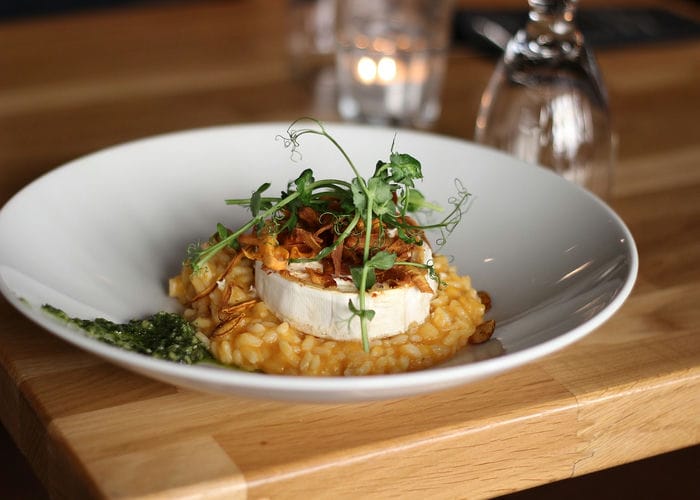
The foundation of risotto lies in its methodical preparation.
Short, plump grains of rice, such as Arborio, are critical because of their high starch content, which contributes to the dish's creamy texture.
Cooking begins with toasting the rice gently in butter — a step known as tostatura — to coat each grain with fat, which prevents them from becoming mushy.
Then, warm broth, commonly chicken, vegetable, or beef, is added gradually, allowing the rice to absorb the liquid slowly and release its starch.
Adding saffron infuses the risotto with its signature yellow hue and a subtle but distinct flavor.
This is most prominent in Risotto alla Milanese, the Milanese variant that is often served with Ossobuco.
A mandatory addition of butter and grated Parmigiano-Reggiano cheese, or sometimes Grana Padano, towards the end of cooking, referred to as mantecatura, enriches the risotto, giving it a luxurious, creamy sauce silky finish.
Regional Variations of Risotto
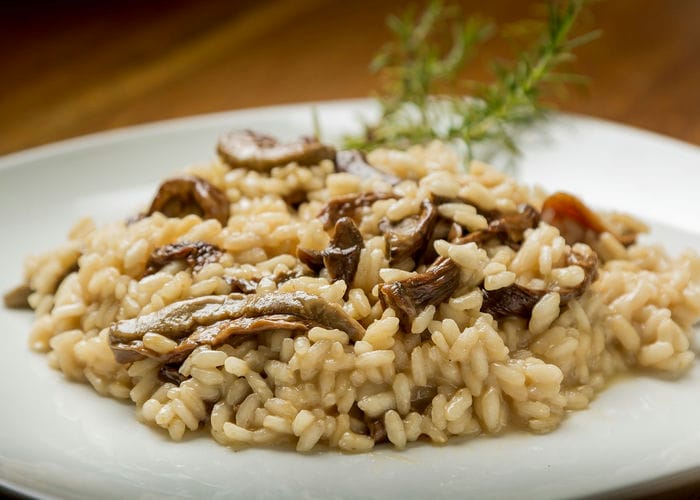
Risotto's versatility allows it to adopt many forms, reflecting the produce and palate of its region.
In Milan, the golden-hued Risotto alla Milanese stands out, its color derived from the precious spice of saffron.
Moving eastward, Venice offers seafood-infused risotto showcasing the bounty of its lagoon and Adriatic Sea.
Ingredients like shrimp, mussels, and clams are not uncommon, adding both flavor and textural contrast to the dish.
The Tuscan region, though less renowned for risotto compared to its northern neighbors, brings forth variants that often incorporate ingredients indigenous to Tuscany, like wild mushrooms or truffles when in season.
In all variations, the essence of risotto is consistent: a gradual layering of flavors achieved through meticulous cooking, stirring, and attention to the quality of ingredients used.
Desserts: Sweet Endings Italian Style

Italian cuisine is celebrated for its rich diversity, and its desserts are no exception, offering an array of sweet treats that perfectly round off any meal.
Famous Desserts
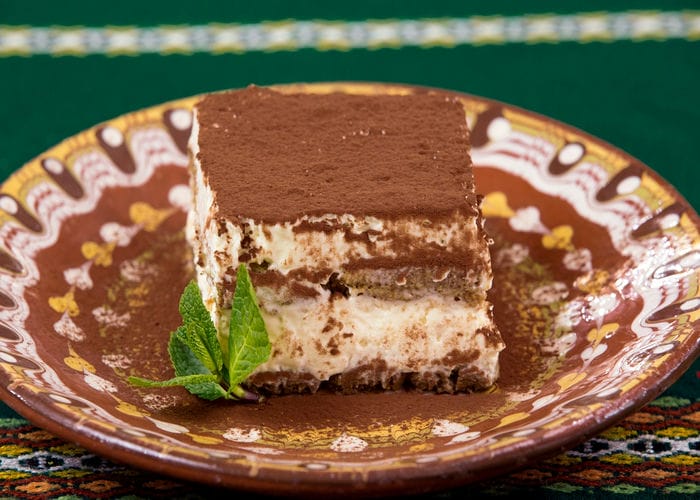
- Tiramisu: Often a favorite, this dessert layers ladyfingers dipped in coffee with a whipped concoction of eggs, sugar, and mascarpone cheese, dusted with cocoa powder.
- It masterfully balances the richness of the cream with the boldness of espresso.
- Gelato: A step beyond standard ice cream, gelato is denser and comes in an assortment of flavors from classic chocolate to seasonal fruits.
- It's churned at a slower rate, which results in less air and a silkier texture.
- Cannoli: Originating from Sicily, cannoli consist of tube-shaped shells of fried pastry dough, filled with a sweet, creamy filling usually containing ricotta.
- They often feature additions like pistachios, chocolate chips, or candied fruits.
- Panettone: A Christmas specialty, this tall, dome-shaped bread is studded with raisins, candied orange peel, citron, and lemon zest.
- It's traditionally enjoyed during the festive season, but its delightful taste is appreciated year-round.
Beverages: More Than Just Wine

While Italy is renowned for its vast selection of wines, the country's beverage culture extends well beyond.
Italian coffee, in particular, is an integral part of the daily life, while a variety of wines and aperitifs mark the richness of Italian drinking traditions.
Italian Coffee Culture

The Italian day often begins with a beloved espresso, savored for its strong and rich flavor.
This iconic coffee is served in small cups and is the foundation of several other coffee-based drinks, such as cappuccino.
The ritual is so rooted in Italian culture that even the weather in Italy in January, with its crisp cold, wouldn't deter locals from starting their day at the nearest café bar, sipping their morning espresso.
Popular Italian Wines and Aperitifs

Among Italian wines, Chianti is particularly esteemed, a red wine known for its versatility and depth, pairing splendidly with Italy’s hearty cuisine.
Prosecco, a sparkling white wine from the Veneto region, offers a lighter alternative, often served as an aperitif to stimulate the appetite.
Aperitifs like the Aperol Spritz, blending Prosecco with Aperol and soda, have gained popularity both in Italy and internationally, enjoyed for their refreshing zest before a meal.
Final Thoughts
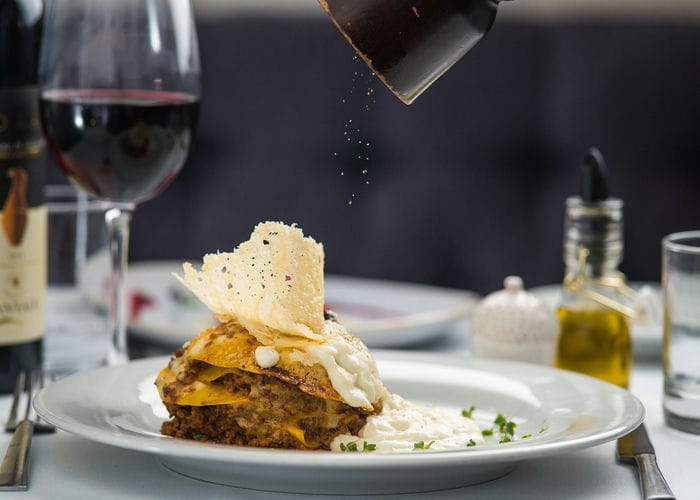
As our culinary journey comes to an end, we're left with a profound appreciation for the rich tapestry that is Italian cuisine.
From the bustling piazzas of Rome to the serene countryside of Tuscany, each region of Italy offers a unique flavor profile that collectively defines one of the world's most beloved gastronomies.
The commitment to fresh ingredients, the reverence for traditional methods, and the remarkable regional diversity are the pillars that uphold the temple of Italian culinary excellence.
Whether it's the global adoration for pizza and pasta, the rich variety of cheeses and risotto, or the indulgent array of desserts and beverages, Italy's contributions to the culinary world are as timeless as they are delicious.
The historical roots of Italian cooking, deeply embedded in ancient civilizations, continue to influence the evolution of its cuisine, ensuring that every dish served is not just a meal but a story told on a plate.
Italian food is more than sustenance; it's a cultural artifact, a piece of heritage shared at every table, and a celebration of life's simple pleasures.
As we reflect on the iconic dishes that have become synonymous with Italian culture, we're reminded that to partake in this cuisine is to partake in a centuries-old legacy of flavor, passion, and unparalleled craftsmanship. Buon appetito!
Frequently Asked Questions
What are some of the most quintessential dishes one should try when visiting Italy?
What is considered to be the national dish of Italy and its significance?
Which Italian dishes are most recommended for someone experiencing Italian cuisine for the first time?
Could you list five traditional Italian dishes that are deeply rooted in Italian culture?
What are some typical Italian meals that locals enjoy on a daily basis?
What unique Italian delicacies are there that might not be as well-known internationally?






